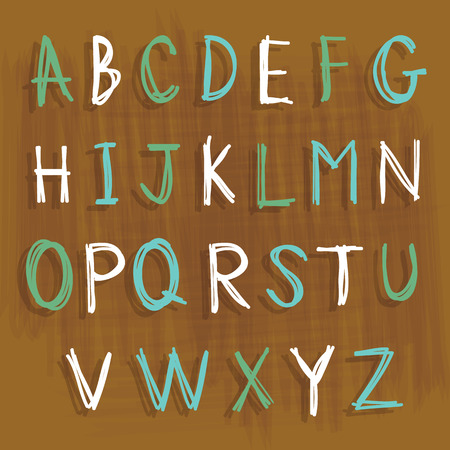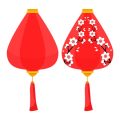Introduction to Anglo-Saxon Culture in Britain
The historical landscape of Britain underwent profound transformation with the arrival of the Anglo-Saxons, a collective term for the Germanic tribes that settled in England from the fifth century onwards. This period, often marked by political upheaval and cultural fusion, laid the foundation for many aspects of British society. The Anglo-Saxons brought with them distinct social structures, languages, and belief systems, which would go on to shape local customs and spiritual practices. The interplay between indigenous Celtic traditions and the incoming Anglo-Saxon culture fostered a unique environment for cultural development, particularly in the realms of language and ritual. Old English, as the primary linguistic vehicle, not only unified disparate groups but also facilitated the recording and transmission of oral traditions and mystical knowledge. Within this dynamic setting, the seeds were sown for practices such as rune divination to take root and evolve, reflecting both imported beliefs and local adaptations. Understanding this social, historical, and linguistic backdrop is crucial to appreciating how Anglo-Saxon culture influenced spiritual practices in Britain, setting the stage for the intricate relationship between runes and divination that would emerge in subsequent centuries.
2. Origins and Evolution of Rune Divination
The journey of rune divination into Britain is marked by a complex interplay between indigenous traditions and continental influences, particularly those stemming from the Germanic migrations. The runic alphabets, known collectively as the futhorc or futhark, originated on the European continent among Germanic-speaking peoples. By the fifth century, these symbols began to appear in Britain, coinciding with the arrival of the Anglo-Saxons. The adoption and adaptation of runes in Britain reflected not only a practical shift in written communication but also an evolution in esoteric and divinatory practices.
Continental Influences and Local Adaptations
The Anglo-Saxon settlers brought with them their own versions of the runic alphabet, which subsequently evolved into the distinctive Anglo-Saxon futhorc. This script expanded upon the original Elder Futhark, incorporating additional symbols to suit the Old English language. While runes were primarily used for inscriptions on monuments and everyday objects, evidence suggests that their symbolic power was also harnessed for magical or divinatory purposes. The process was not unidirectional; as runes became integrated into local customs, they absorbed elements from pre-existing British spiritual practices.
Key Stages in the Transmission of Runic Traditions
| Period | Development | Influence |
|---|---|---|
| Pre-Anglo-Saxon Britain | Celtic ogham script and indigenous spiritual rituals | Local |
| 5th-7th Century CE | Introduction of runic writing by Anglo-Saxon settlers | Continental (Germanic) |
| 7th-10th Century CE | Evolution of Anglo-Saxon futhorc; merging with local beliefs | Hybrid (Anglo-Saxon & British) |
| Post-10th Century CE | Decline of runic use; survival in folklore and magic | Residual/Traditional |
The Role of Syncretism in Rune Divination Practices
This blending—known as syncretism—was central to how rune divination took shape in Britain. Indigenous Britons may have perceived runes through their own cultural lens, interpreting them alongside established practices such as ogham divination or native folk magic. Meanwhile, continental traditions supplied the structural framework for rune casting and interpretation. Over time, this resulted in a distinctly British approach to rune divination: one that balanced imported symbolism with local spiritual priorities. Thus, the origins and evolution of rune divination in Britain are best understood as an ongoing dialogue between external influences and native ingenuity.

3. Anglo-Saxon Adaptation of Rune Practices
The transition of rune divination from its Scandinavian origins to Anglo-Saxon Britain involved significant cultural adaptation, shaped by the unique social, religious, and political landscape of early medieval England. Unlike their Norse predecessors, the Anglo-Saxons integrated rune practices into a milieu where indigenous pagan traditions coexisted—and eventually competed—with the growing influence of Christianity.
Integration with Pre-Christian Beliefs
Prior to Christianisation, the Anglo-Saxons maintained a rich tapestry of local beliefs and ritual practices. Runes were not simply an imported script but became interwoven with native folklore and magic. Divination using runes—often called “runecasting”—was adapted to reflect local deities, spirits, and ancestral customs. For instance, certain runic inscriptions found in burial sites or on artefacts suggest that runes were invoked for protection, fertility, or guidance from ancestral spirits, echoing pre-Christian spiritual concerns unique to Britain.
Christian Influence and Syncretism
With the spread of Christianity from the 7th century onwards, Anglo-Saxon rune divination did not disappear but underwent a process of syncretism. While overt magical practices were discouraged by ecclesiastical authorities, some elements persisted in more subtle forms. Christian scribes occasionally incorporated runes into manuscripts for purposes such as invoking divine protection or encoding secret messages. Additionally, certain rune poems and charms combined references to Christ or Christian saints alongside traditional symbols, blurring the boundaries between pagan magic and Christian ritual.
Cultural Hybridisation in Practice
This blending resulted in distinctly Anglo-Saxon approaches to rune divination. For example, runic symbols might be used in legal documents or boundary markers as a means of invoking both secular authority and supernatural safeguarding—a practice rooted in both Germanic tradition and evolving Christian doctrine. The use of runes in personal names, charms, and everyday objects further illustrates how deeply these symbols permeated daily life while being continuously reinterpreted through the lens of changing belief systems.
Legacy for British Esoteric Traditions
The Anglo-Saxon adaptation of rune practices laid the groundwork for later British esoteric traditions. By melding Norse symbolism with local mythologies and Christian motifs, they created a uniquely British approach to divination that continues to influence contemporary interpretations of runic lore within the UK.
4. Material Culture and Archaeological Evidence
Understanding the impact of Anglo-Saxon culture on rune divination in Britain necessitates a close examination of material culture and archaeological discoveries. Artefacts unearthed across the British Isles provide tangible evidence of how runic practices were embedded within the spiritual and daily lives of the Anglo-Saxons. Through systematic excavation, scholars have identified a range of items—ranging from inscribed objects to ritualistic tools—that underscore the integration of rune divination into broader cultural contexts.
Key Artefacts Associated with Rune Divination
The most compelling evidence emerges from objects bearing runic inscriptions. These artefacts vary significantly in material, function, and provenance, reflecting both the diversity and adaptability of rune usage. The table below summarises several notable finds:
| Artefact | Location Found | Date | Description | Interpretation |
|---|---|---|---|---|
| Franks Casket | Northumbria | 8th century | Whalebone chest inscribed with runes | Depicts mythological scenes; suggests ritual or symbolic use |
| Blythburgh Runic Ring | Suffolk | Late 9th century | Gold ring with protective runes | Likely used in ritual or for personal protection |
| Branston Runic Knife | Lincolnshire | 7th century | Iron knife with runic inscription | Possible ritual tool; inscription may indicate ownership or magical intent |
Contextual Analysis of Relics and Sites
Beyond individual artefacts, entire archaeological sites reveal patterns of ritual behaviour linked to rune divination. For instance, burial sites in East Anglia often contain grave goods marked with runes, implying a belief in their protective or communicative power in the afterlife. Furthermore, some settlement excavations have produced fragments of wooden or bone sticks carved with runes—possibly used as casting lots or for drawing lots during divinatory rituals.
Interpretive Challenges and Scholarly Debates
Interpreting these findings is not without its challenges. The ambiguous nature of some inscriptions, combined with the scarcity of explicit written records detailing divinatory practices, fuels ongoing debates among archaeologists and historians. Some scholars argue that runes on everyday objects simply denote ownership or craftsmanship, while others posit a deeper, magical significance consistent with continental Germanic traditions.
Conclusion: Material Evidence and Cultural Synthesis
In sum, the material culture of Anglo-Saxon Britain offers critical insights into the prevalence and adaptation of rune divination. Artefacts and archaeological sites not only attest to the physical presence of runes but also illuminate the complex interplay between indigenous beliefs and imported traditions. These findings underscore the nuanced ways in which Anglo-Saxon culture shaped—and was shaped by—the practice of rune divination within Britain.
5. Linguistic and Symbolic Aspects
The Linguistic Nature of Anglo-Saxon Runes
Anglo-Saxon runes, known as the Futhorc, represent a distinctive script that evolved from the earlier Germanic runic alphabets. Their adaptation to the Old English language resulted in the addition of several unique characters, reflecting the specific phonetic needs of the Anglo-Saxon people. This linguistic flexibility allowed the Futhorc to serve not only as a medium for everyday writing but also as a powerful tool for divinatory practices. In Britain, the use of runes extended beyond mere inscription; it was deeply intertwined with spoken charms and incantations, demonstrating the Anglo-Saxons belief in the inherent power of words and symbols.
Terminology and Its British Context
The terminology associated with Anglo-Saxon rune divination is rooted in both native tradition and the broader Germanic context. Terms such as “rúncræft” (the craft or skill of runes) and “galdor” (magical chant or spell) are uniquely Anglo-Saxon, highlighting the integration of runic knowledge with verbal magic. In British sources, references to “wyrd” (fate or destiny) frequently appear, underscoring the role of rune casting as a means to uncover hidden aspects of fate. These terms not only reflect linguistic innovation but also convey a distinctly British perspective on the mystical functions of runes.
Symbolism Unique to British Traditions
The symbolic landscape of Anglo-Saxon runes in Britain is characterised by its synthesis of indigenous beliefs and imported Norse elements. While many rune symbols retained meanings consistent with their continental counterparts, certain signs acquired interpretations shaped by local legend, geography, and societal values. For instance, the “oak” rune symbolised both physical strength and spiritual protection, echoing the significance of oak trees in British folklore. Similarly, the concept of “wyrd” became closely associated with the weaving of destiny, a motif prevalent in Anglo-Saxon poetry and myth. This unique symbolism not only distinguished British rune divination from its European relatives but also embedded it firmly within the islands cultural identity.
Enduring Legacy in Modern Britain
The linguistic and symbolic innovations of the Anglo-Saxons continue to influence contemporary approaches to rune divination in Britain. Modern practitioners often draw upon Old English terminology and interpretative frameworks, ensuring that the legacy of Anglo-Saxon culture remains vital within present-day spiritual and esoteric circles. By maintaining this connection to the past, British rune divination preserves its distinctive character while adapting to evolving cultural contexts.
6. Enduring Influence and Modern Revivals
The legacy of Anglo-Saxon rune divination continues to cast a long shadow over British folklore and modern spiritual practices. While the original contexts of rune usage—rooted in early medieval belief systems—have faded, the symbolic resonance of runes endures in Britain’s collective cultural consciousness. Runes appear not only as historical artefacts but also as living symbols within storytelling, folk magic, and even rural superstitions that persist in some regions.
In recent decades, there has been a notable revival of interest in rune divination across Britain. This resurgence is closely tied to broader trends in contemporary spirituality, where individuals seek meaning through ancient traditions and reconnect with perceived ancestral wisdom. Modern practitioners often blend traditional Anglo-Saxon interpretations with new age perspectives, using runes for personal insight, meditation, or rituals that evoke a sense of historical continuity.
This renewed enthusiasm has sparked academic inquiry as well as community-led workshops, festivals, and online forums dedicated to exploring the runic heritage. Museums and educational initiatives also play a role in reintroducing the public to the significance of runes beyond mere superstition, presenting them as complex tools for understanding both the past and present identities of Britain.
It is important to note that while modern interpretations may diverge from strict historical authenticity, they nonetheless testify to the enduring fascination with Anglo-Saxon culture. The adaptability of rune divination allows it to remain relevant, serving as a bridge between ancient worldviews and contemporary quests for meaning. Ultimately, the continuing influence of Anglo-Saxon runes speaks to their unique power: not only as relics of a bygone era but as dynamic elements shaping British spiritual life today.

